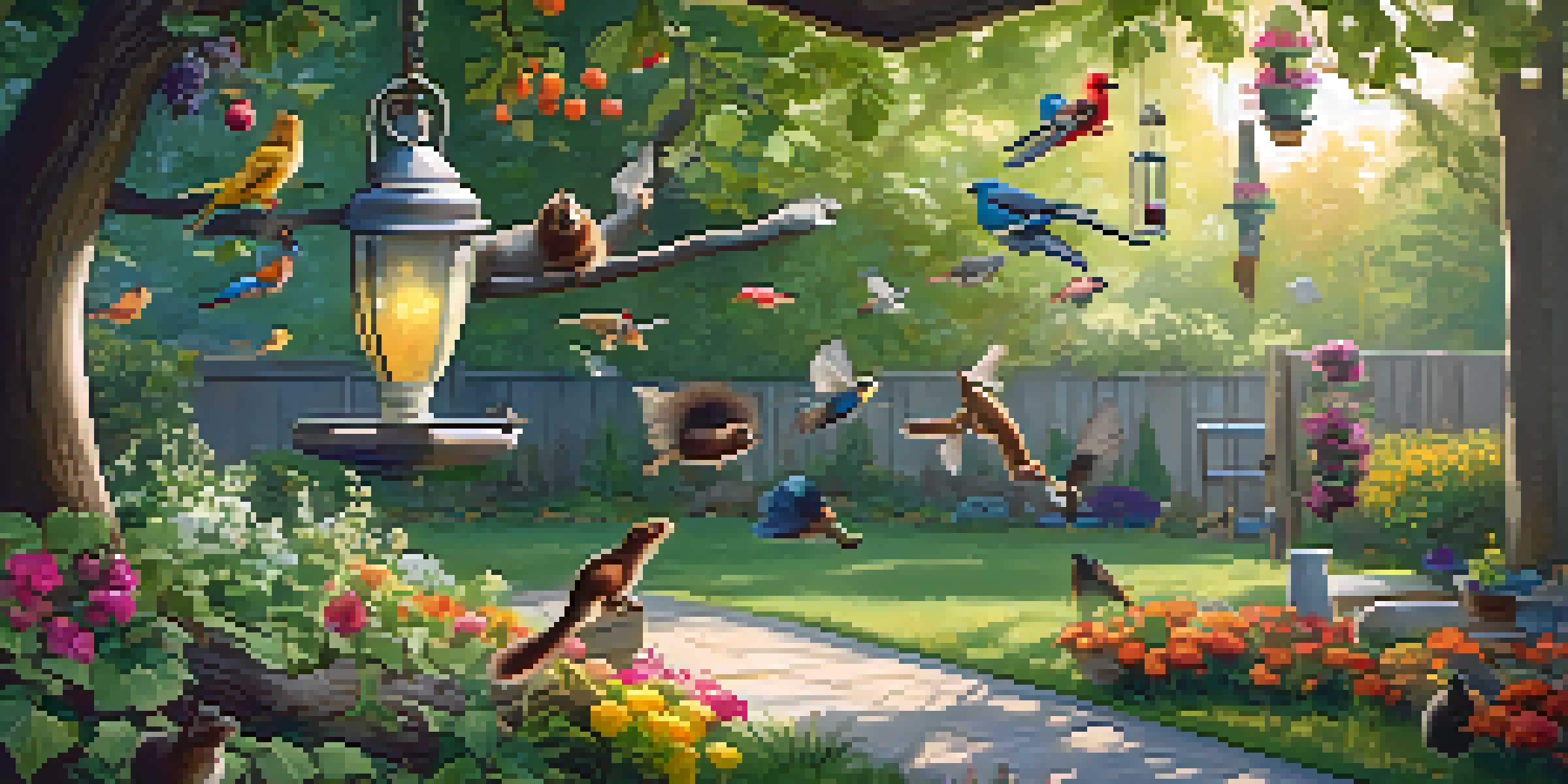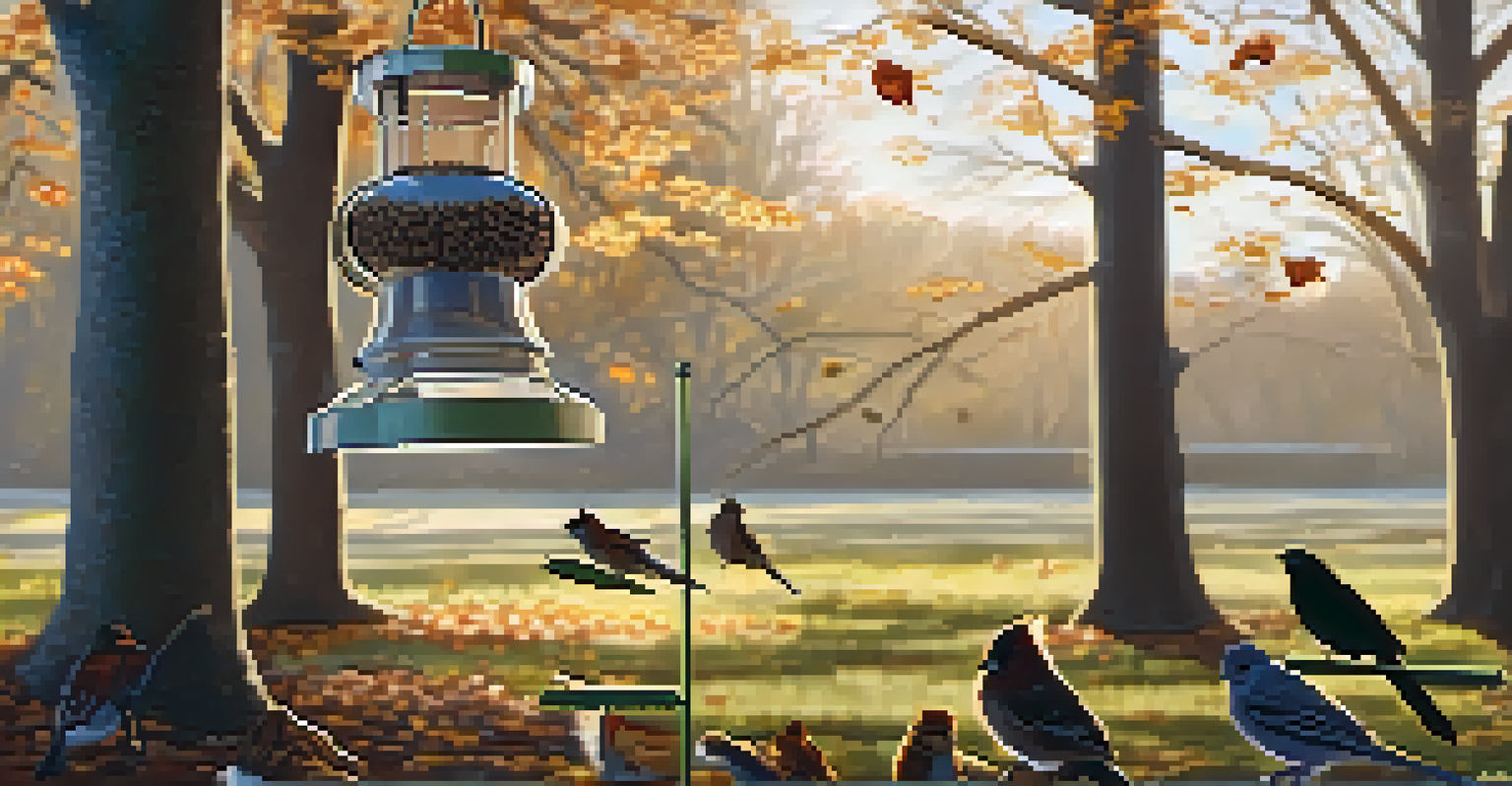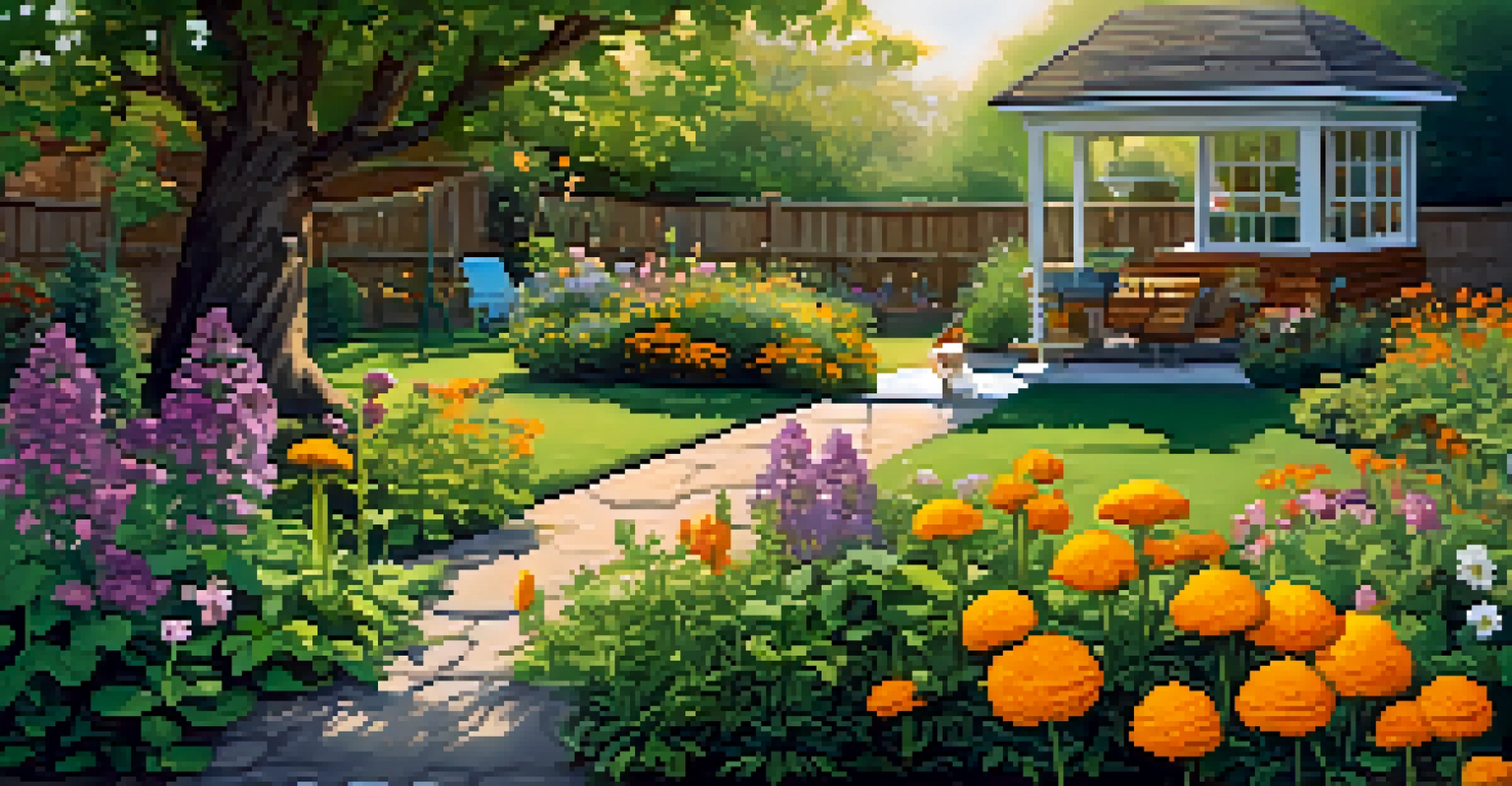Bird Feeding Challenges: Dealing with Squirrels and Pests

Understanding the Common Pests at Bird Feeders
When it comes to bird feeding, you're not just attracting feathered friends; you're also inviting a host of pests. Squirrels, raccoons, and various insects can quickly turn your serene birdwatching experience into a chaotic feeding frenzy. Understanding these common pests is the first step in managing them effectively.
Nature is not a place to visit. It is home.
Squirrels are often the biggest culprits, with their agile bodies and sharp teeth making quick work of bird feeders. They can leap several feet and even climb trees with ease, making it seem like they have a personal vendetta against your birdseed. Other pests, such as ants and mice, may not be as acrobatic but can still wreak havoc on your bird feeding setup.
Recognizing the signs of pest activity, like missing seed or chewed feeders, is crucial. By identifying the types of pests you're dealing with, you can tailor your approach to keep your feeders safe for the birds while minimizing the nuisance from unwanted guests.
The Squirrel Dilemma: Why They're So Attracted to Feeders
Squirrels are not just mischievous; they are also opportunistic feeders. They have an incredible sense of smell, and once they catch a whiff of seeds, they’ll come running. Their intelligence and persistence mean that if there's a way to access your bird feeder, they will find it.

Their attraction to feeders often stems from the high-calorie content of seeds. Just like us, squirrels are always on the lookout for a tasty snack, and bird feeders provide an easy source of food. This natural instinct to hoard food for winter makes your feeder a prime target, especially during colder months.
Common Bird Feeder Pests
Squirrels, raccoons, and insects can disrupt bird feeding by consuming seeds and damaging feeders.
Understanding why squirrels are drawn to your feeder can help you implement better strategies to deter them. By acknowledging their behavior, you can take proactive steps to squirrel-proof your feeding setup while still keeping it inviting for the birds.
Methods to Squirrel-Proof Your Bird Feeders
Squirrel-proofing your bird feeders doesn't have to be a Herculean task. There are many effective methods to keep these furry intruders at bay. One popular option is using feeders designed specifically to deter squirrels, featuring weight-sensitive mechanisms that close off access when a heavier animal tries to feed.
The Earth has music for those who listen.
Another practical method is the strategic placement of your feeders. Position them at least ten feet away from trees or structures that squirrels could leap from. Adding baffles, which are dome-shaped barriers, can also prevent squirrels from climbing up to your feeder.
Regular maintenance is key, too. By frequently checking and adjusting your feeders and their placements, you can stay one step ahead of the squirrels. Remember, persistence pays off when it comes to creating a safe feeding environment for your birds.
Natural Deterrents: Keeping Pests Away Organically
If you'd prefer not to rely solely on mechanical solutions, consider using natural deterrents. Certain scents, such as cayenne pepper or garlic, can be sprinkled around feeders to deter squirrels and other pests without harming the birds. The strong aroma is off-putting to many animals but harmless to our feathered friends.
You can also plant certain herbs or flowers around your feeding area. For instance, marigolds and mint are known to repel pests while attracting beneficial insects. Creating a natural barrier can discourage intruders while keeping your garden vibrant.
Squirrel-Proofing Strategies
Using specially designed feeders, strategic placements, and baffles can effectively minimize squirrel access.
Experimenting with different natural deterrents can be a fun part of bird feeding. By observing what works best in your environment, you can create a harmonious space where birds feel safe and pests are kept at a distance.
Choosing the Right Birdseed to Minimize Waste
Selecting the right birdseed can play a significant role in minimizing waste and reducing pest attraction. High-quality seeds will not only attract your desired bird species but also leave less leftover seed for squirrels and other pests to munch on. Consider blends that are specifically formulated for the birds in your area.
For instance, sunflower seeds are popular among many bird species but are also a squirrel favorite. Using a mix that includes seeds that are less appealing to squirrels, like safflower seeds, can help ensure that your feeders attract the birds you want while deterring the pests.
Ultimately, being mindful of what you put in your feeders can lead to a more enjoyable bird feeding experience. The right seed can help keep your feeder a sanctuary for your feathered visitors and minimize unwanted attention from pests.
Feeder Styles That Deter Pests Effectively
The style of your bird feeder can significantly impact how well it deters pests. Tube feeders, for example, are often less accessible to squirrels due to their design, making them a popular choice for bird lovers. These feeders typically have smaller feeding ports that cater to specific bird species while keeping larger animals at bay.
Platform feeders, while great for attracting a variety of birds, can be more inviting to squirrels and other pests. If you prefer platform feeders, consider adding a wire mesh to make it more challenging for squirrels to access the food. Alternatively, using feeders with domes can protect the seed while still allowing birds to feed.
Importance of Regular Maintenance
Cleaning your feeders regularly is essential for preventing pest attraction and ensuring a healthy environment for birds.
By selecting the right feeder style, you can create an environment that prioritizes the safety of your birds while reducing the likelihood of pests ruining your feeding experience.
Maintaining Your Feeders: A Key to Success
Regular maintenance of your bird feeders is crucial for keeping both your birds and your feeding area clean and inviting. Dirty feeders can attract pests and diseases that can harm your feathered friends. A good rule of thumb is to clean feeders every two weeks, especially during peak feeding times.
Using a mixture of warm water and mild soap can effectively remove old seed debris and prevent mold growth. Make sure to rinse thoroughly to avoid leaving any soap residue, which could deter birds from returning. Keeping feeders clean not only helps with hygiene but also makes them less attractive to pests.

Incorporating maintenance into your bird feeding routine can enhance your overall experience. A little upkeep goes a long way in ensuring that your feeders remain a safe haven for the birds you love while keeping pests at bay.